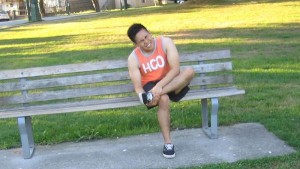A bunion is ideally described as sore swelling of the soft tissues along with enlargement of the bone over the interior of the big toe. Oftentimes, the big toe appears as if it is bent inwards to the other adjacent toes or might lie across them.
Indication of a bunion
The indications of a bunion usually manifest gradually and progressively worsen. In the initial phases, there are no symptoms at all. Over time, pain can be felt in and around the base of the big toe, especially on the interior region. It is usually alleviated by taking shoes off or using soft shoes with a wide fit.

The small bony growths around the 1st MTP joint at the base of the big toe might form. Oftentimes, there is inflammation of the bursa which lubricates between the tendon and bone. In severe cases, it is hard to wear certain shoes due to the strain placed on the joint or due to the rubbing action of the bone against the shoe.
What are the causes?
- Strain on the interior of the forefoot which forces the 1st metatarsal foot bone to wander outwards.
- Wearing shoes that are too tight-fitting
- Biomechanical issues such as overpronation
- Using high-heeled shoes regularly.
- Aging process
- Direct trauma to the ligaments on the interior part of the foot or to the sesamoid bones
- Increased length of the 1st metatarsal bone in the foot
Other possible causes include joint degeneration, shortening of the Achilles tendon, collage deficiency disorders and neuromuscular disorders.
Management
The initial treatment for a bunion is aimed on reducing the pain and correcting any biomechanical issues of the foot. As for late or severe cases, surgical intervention is needed.
Taping of the bunion
A simple taping method is used to support the joint and reduce pressure on the interior of the foot. This technique involves separating the big toe and the adjacent one to alleviate the symptoms.
Orthotic shoe inserts
In case of biomechanical issues with the foot such as overpronation, a podiatrist will perform a full gait analysis and provide orthotic inserts. This is usually done with corrective treatment before surgical intervention is attempted but it is quite common to use after surgery as well.
Surgery
For severe cases, surgery might be required to realign the joint but this is the last option if the conservative measures were not effective or walking triggers pain.
After the procedure, the foot is immobilized, usually under a cast for 4-8 weeks to maintain proper alignment of the bones. Crutches are also used to allow the individual to move around.
Once this period has passed, the foot is checked once again to determine if the bones correctly healed. This is the time to start gradual reintroduction of full weight bearing.
